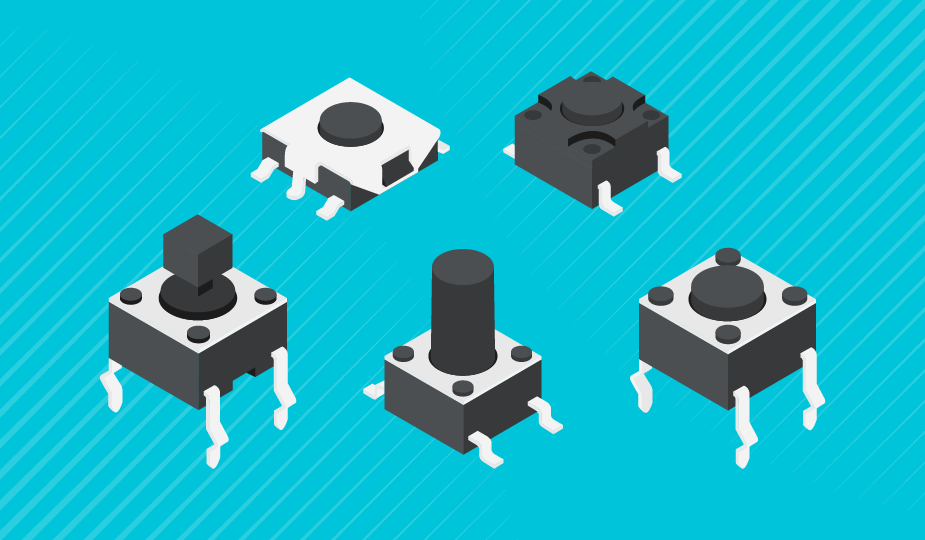Tactile switches are popular among writers for their satisfying feel.
Checking Out the Advantages of Tactile Switches for Your Next Project
Tactile switches, identified by their noticeable comments, are pivotal for boosting user interactions in modern technology. As industries progressively focus on user-friendly interfaces, the fostering of responsive switches across different fields-- from consumer electronic devices to commercial equipment-- advantages factor to consider.

Understanding Tactile Switches: Exactly How They Function and Their Types

These switches are readily available in numerous kinds, consisting of dome, leaf, and tablet. Pill switches are understood for their portable size and are often utilized in tools with space restrictions.
The Duty of Tactile Feedback in Individual Experience
User experience is substantially improved by responsive responses, which serves as a vital bridge in between the tool and its customer. Responsive buttons, by their actual nature, supply a physical action to individual actions, verifying inputs with an obvious feeling.
In the world of access, responsive feedback plays a pivotal role. It permits people with aesthetic disabilities to engage confidently with different devices, from mobile phones to household devices. The distinctive physical experience can connect much-needed details about operational states or input accuracy, therefore boosting the general interface and making technology extra comprehensive and easy to use. Thus, responsive comments is fundamental in making instinctive and effective user experiences.
Comparing Tactile Switches Over With Other Kinds of Switches
While tactile switches provide conclusive feedback that helps in accessibility and individual confidence, it is very important to analyze exactly how they compare to various other types of buttons used in electronic gadgets. Direct switches, for example, give a smooth keystroke without the responsive bump, which can be preferable for tasks calling for quick key presses, such as video gaming. Nevertheless, they do not have the unique responses that helps protect against typing errors obvious in responsive buttons.
On the various other hand, clicky buttons, comparable to tactile variations, use distinct comments. They create a louder click audio at the actuation factor which responsive buttons do not. This sound can be pleasing yet could be turbulent in silent settings. Comparatively, responsive buttons strike an equilibrium in between the quiet operation of direct switches and the noisy assurance of clicky buttons, making them functional for both loud and silent setups. This convenience permits for a bigger array of usage situations without triggering disturbance. discover here
Practical Applications of Tactile Switches Over in Numerous Tasks
Many contemporary electronics incorporate tactile switches as a result of their reliable responses and easy to use interface. These parts are especially prevalent in tools needing accurate user control. Customer electronic devices like keyboards, remote controls, and pc gaming controllers utilize responsive switches to boost the individual experience by giving immediate responsive feedback upon actuation. This responses guarantees customers of their input registration, which is vital in high-speed gaming or data entrance tasks.
Furthermore, tactile buttons are located in various industrial applications. They are used in making equipment panels and handheld analysis devices where operators take advantage of clear operational feedback during machinery handling. Clinical tools likewise utilize tactile switches, adding to their safety and effectiveness. These buttons make it possible for medical care specialists to operate devices swiftly and with precision, important in emergency situation and medical setups. Hence, responsive buttons confirm essential across a Full Report broad spectrum of sectors, providing both performance and dependability.
Tips for Picking and Integrating Tactile Changes in Your Designs
When selecting tactile buttons for numerous style projects, it is vital to think about several key factors to ensure optimal efficiency and assimilation. Evaluate the pressure required for actuation and the switch's life expectations. Developers need to match these specifications with the application's demands to avoid early failure or user discomfort - tactile switches. Next, consider the dimension and impact of the button. Portable layouts may require smaller switches, which could affect the tactile comments and longevity.
Additionally, the environmental conditions where the tool will operate are essential. For tasks revealed to moisture or dirt, selecting buttons with higher IP ratings to stand up to such components is advisable. Lastly, integration convenience link ought to be analyzed. The button must work with the existing circuit design and mounting needs. Making use of switches with pre-soldered leads or those that use clear soldering guidelines can streamline the assembly process, guaranteeing a trusted and reliable integration right into the final item.
Conclusion
